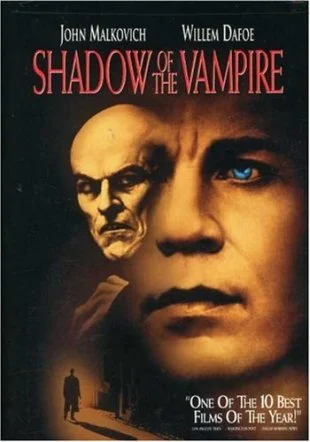Top 5: Movies About Movies
My favorite film podcast, Filmspotting, has several segments on their show that take films and place different contexts around them, in order to compel interesting discussion and spirited debate. I have appropriated their Marathon feature for this blog and will now adopt another: the Top 5. In this segment, they pick a topic and rank their top five films in that category.
The first Top 5 subject (way back in 2005) was Movies About Movies. Fairly self-explanatory, so few caveats are necessary; I define this topic as movies that are about making movies, whether in Hollywood or independently, either in the subject matter or form.
Gibelwho Productions Top 5 Movies About Movies:
5. Ed Wood
4. Sunset Blvd
3. Hugo
2. Man with a Movie Camera
1. Singin’ in the Rain
Ed Wood (1994): Tim Burton’s second teaming with Johnny Depp explored the life of Ed Wood, a 1950s B movie director that produced a prolific filmography, but never managed to jump into the higher echelons of Hollywood. Shot in black and white, which functions as a tribute to classic cinema, the film brings to life the antics that occurred on the low budget film sets of the eccentric, yet extremely passionate, filmmaker Ed Wood.
Sunset Boulevard (1950): A Billy Wilder classic and starring silent film era actress Gloria Swanson, the story follows a down-on-his-luck screenwriter that falls into the clutches of a former Hollywood starlet from the silent era that has lost touch with reality in her massive mansion on Sunset Blvd. Its commentary on the fleeting and illusory nature of fame were uniquely critical of the machine that helped produce the film and the history of Hollywood’s most famous actresses.
Hugo (2011): Martin Scorsese has an almost palpable passion for cinema, which is evident not only this charming story, but in the form of the film. The story follows the adventures of an orphan in Paris who is trying to solve the mystery of an automaton left to him by his father; his undertaking brings him into the path of celebrated filmmaker Georges Melies, considered a pioneer in special effects and storytelling techniques. Watching the film in the theater, the story took a surprising turn from a boy and his automaton to the magic and history of filmmaking.
Man With a Movie Camera (1929): An experimental documentary by Soviet filmmaker Dziga Vertov, the movie depicts various scenes of urban life in 1920s Russia. The film emphases the camera’s ability to observe reality in any space and specifically places its gaze on the machinery that was slowly entering urban life. The film begins with a shot of a camera, telegraphing the intent to focus on the actual act of filming, and employs various cinematic and editing techniques in assembling the film, so the theme functions on both a meta and formal level.
Singin’ in the Rain (1952): Gene Kelly and Stanley Donen direct this vibrant musical that explores Hollywood’s transition from silence to sound. One of the best musical comedies of the MGM era, it gives a humorous view into Hollywood politics, the formation and handling of stars and their personas, and the grand scale of the studio system, both in the depiction of an emerging system in the 1920s, as well as the historical context for the 1950s studio that produced the actual film.
Honorable Mentions:
Super 8 (2011): Directed by JJ Abrams, who was attempting to channel the summer blockbusters of his idol Steven Spielberg, the film initially focuses on a group of kids filming a zombie flick on a super 8 camera. Once they witness a horrible accident, the film abandons its initial concept to focus on pure science fiction; while it has trouble maintaining a strong identity in the film’s second half, the early scenes of the kids putting together their film is quite magical. Abrams cast a strong group of child actors, who manage to show the audience how the fun of making low budget films as a kid in the 70s could fuel a passion for filmmaking that produced many of Hollywood’s modern directors, such as Abrams himself.
Saving Mr. Banks (2013): John Lee Hancock takes up the tale of how Walt Disney persuaded the finicky author of Mary Poppins to grant him the rights to translate the tale onto the silver screen. Mixing the present day (1960s) with flashbacks of the author’s childhood, the scenes of Walt and team on the Disney Lot working on scripts and songs, as well as the look at classic Disneyland, are a fascinating visualization of Disney Studios in the prime of producing film classics.
This Film is Not Yet Rated (2006): A documentary attempting to reveal the membership behind the MPAA, the organization that assigns ratings to films entering the market, as well as their process for defining and assigning ratings, especially exploring their conflicting views between sex and violence. The intent of this film is fantastic, but the execution falters when a large amount of screentime is given to a private investigator attempting to root out the MPAA’s membership rolls. However, the overall exploration of hypocrisy and secrecy in the movie rating organization is well worth the watch.
Hearts of Darkness: A Filmmaker’s Apocalypse (1991) and Barton Fink (1991): Haven’t seen either of these films, but they immediately came to mind for this topic. I would imagine they would have been fighting for a spot on the list if viewed by time of publication.
Upcoming:
Hail, Caesar! (2016): Upcoming film by the Coen brothers, set in the 1950s Hollywood studio system. Log Line:
LIGHTS. CAMERA. ABDUCTION. Hail, Caesar! follows Eddie Mannix, a fixer working for Hollywood studios in the 1950s, trying to discover what happened to a cast member who vanishes during filming.











